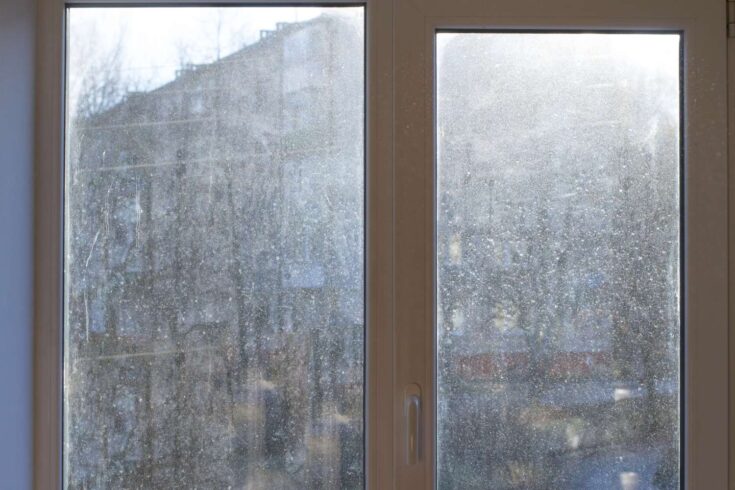The recent study was conducted to determine how aerosols contribute to air pollution as well as how cooking emissions have contributed to poor air quality. The work has demonstrated that this problem may affect cloud droplet formation, affecting more general air quality and climate, and increasing human health risks.
The work, undertaken by scientists at the Science and Technology Facilities Council’s (STFC) ISIS Neutron and Muon Source, in a project led by the University of Birmingham and involving teams from the University of Bath, Diamond Light Source, and Institut Laue-Langevin in France, identified that grimy windows could be harbouring toxic pollutants.
Fatty acids, thin films
Organic emissions from cooking contain fatty acids which are highly stable and are not broken down in the atmosphere. When these emissions hit a solid surface, such as a window, they form a thin self-organising film that accumulates over time. Consequently, the thin film becomes rougher and attracts more water from the air, creating a crust on the surface of the window. It is then possible for toxic pollutants to get trapped underneath the crust, protecting the toxic pollutants from being broken down by the atmosphere.
Atmospheric scientist, Dr Christian Pfrang from the University of Birmingham said:
The fatty acids in these films are not, by themselves, particularly harmful – but because they are not being broken down, they are effectively protecting any other pollutants that might be trapped underneath.
Spinning super-thin films
The research team used lab-engineered samples (‘proxies’) of material intended to approximate ‘real world’ samples. They were spun into super-thin pollution films no thicker than a few tens of nanometres.
The INTER beamline (INTER), chosen for its neutron reflectometry techniques, at STFC’s ISIS Neutron and Muon Source was used to map out a nano-scale composition of the proxies by using its source of neutrons to capture the image. The researchers were then able to replicate the behaviour of films over time by varying environmental factors, such as humidity and temperature.
Neutron reflectometry is a specialised technique only available at a small number of large-scale research facilities, such as the ISIS Neutron and Muon Source. By using INTER and its neutron reflectometry capabilities, the researchers were able to follow oxidation reactions to study the breakdown of the proxies in real-time, which is otherwise very difficult or impossible to obtain.
Dr Maximilian Skoda, a research scientist from STFC’s ISIS Neutron and Muon Source says:
Especially with the technique of neutron reflectometry, ISIS provides unique capabilities, which bridge the gap between highly controlled laboratory experiments and field research in the very important area of atmospheric science.
Trapped toxic pollutants
The project has discovered that the surfaces of the films became increasingly likely to hold water when exposed to ozone, which can result in toxic pollutants becoming trapped underneath the film preventing it from being broken down in the atmosphere.
Although this study was not aimed at solving the problem, it has identified and characterised the conditions under which the protective and persistent thin films form. This knowledge can now be used by other scientists to build models and make calculations regarding air quality.
STFC’s ISIS Neutron and Muon Source have been promoting research into the area of atmospheric chemistry, together with the team from the University of Birmingham.
Dr Maximilian Skoda adds that:
In the past few years, ISIS has supported an increasing number of neutron scattering experiments in the area of atmospheric chemistry. Both model systems and real atmospheric samples have been characterised and is helping us improve our understanding of aerosol behaviour in the atmosphere.
The study has been featured on the front cover of a recent edition of Environmental Science: Atmospheres (published on 15 September 2022).



